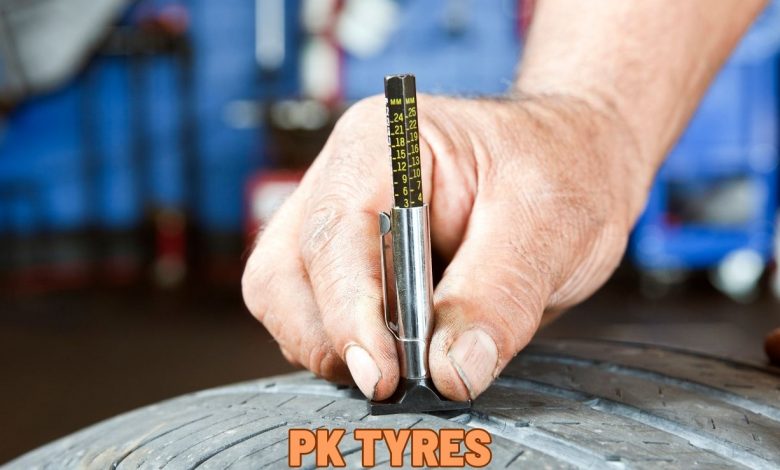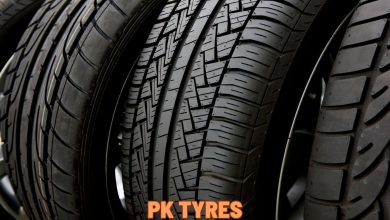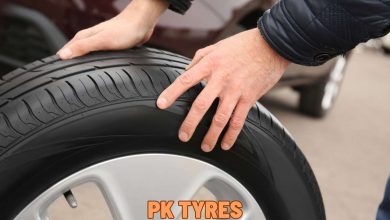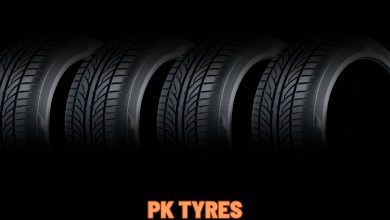Tyre Tread Depth: What it Means and Why it Matters

When it comes to tyre maintenance, there are several things you need to keep in mind. Tyre tread depth is one of the most important factors to consider. In this article, we’ll discuss what tyre tread depth is, why it matters, and how to measure it. When it comes to tyre maintenance, there are several things you need to keep in mind. Tyre tread depth is one of the most important factors to consider. In this article, we’ll discuss what tyre tread depth is, why it matters, and how to measure it.
First of all, what is tyre tread depth? The tread of a tyre refers to the grooves that run along its circumference. These grooves help cars grip the road, especially in wet or slippery conditions. The depth of these grooves is what we refer to as the tyre tread depth. So, why does tyre tread depth matter? Well, for one, it affects the overall performance of your tyre. The more tread depth your tyre has, the better it will be able to grip the road and maintain stability. Having enough tread on your tyres is extra important when it’s wet or slippery. If the tread is low, your tyres can slip and skid.
But tread depth also has a direct impact on safety. In fact, in many countries, there are legal requirements for minimum tread depth. For example, in the UK, the minimum legal tread depth for car tyres is 1.6mm. Driving under this limit is both illegal and dangerous. It can lead to fines and penalty points on your license. Now that we know why tyre treads depth matters, let’s talk about how to measure it. One way to measure your tyre tread depth is by using a small tool called a tread depth gauge. It measures the depth of the grooves in your tyres. You can also use a penny as a quick and easy test. Simply insert the penny into the groove with Lincoln’s head facing down. If the top of Lincoln’s head is visible, your tread depth is too low and it’s time to replace your tyres.
Introduction
Tyres are a crucial component of any vehicle, and they play a vital role in ensuring safety on the road. Tyres are responsible for providing grip, stability, and handling. Tyres wear down over time, like any other part, which can affect how well they work. Keeping track of your tyre tread depth is essential to ensure your tyres perform well. Don’t forget to check it regularly.
What is Tyre Tread Depth?
Tyre tread depth is the measurement of the depth of the grooves in the rubber of your tyre. Tyres have grooves that help them grip the road. Over time, these grooves wear down, and the depth of the tread decreases. Most countries require a legal minimum tread depth of 1.6mm for tyres. Experts suggest replacing tyres when the tread depth falls below 3mm.
Why Does Tyre Tread Depth Matter?
Tyre tread depth is essential for maintaining traction and grip on the road. As the tyres’ tread wears down, they have less grip on the road, making it harder to control your vehicle. This can increase the risk of accidents, especially in wet or slippery conditions. you can also read Exploring Run-Flat Tyres: Pros and Cons for Drivers.
How to Measure Tyre Tread Depth
Measuring tyre tread depth is important, and the most accurate way is to use a tread depth gauge. A tread depth gauge is a small tool that measures the depth of the tyre tread. To use a tread depth gauge, simply place the gauge into the groove of the tyre and read the measurement.
Another way to measure tyre tread depth is by using a coin. This method is less accurate than using a tread depth gauge, but it can give you a rough idea of the tread depth. Simply place a coin into the groove of the tyre with the Queen’s head facing down. If the tread covers the top of the Queen’s head, then the tyre is legal. However, if you can see the top of the Queen’s head, then the tread depth is too low.
When Should You Replace Your Tyres?
As we’ve mentioned earlier, the legal minimum tread depth in most countries is 1.6mm. However, experts recommend replacing your tyres when the tread depth falls below 3mm. This is because the lower the tread depth, the less grip the tyre has on the road. Additionally, tyres with low tread depth are more susceptible to punctures and blowouts.
Conclusion:
Tyre tread depth is an essential factor to consider when it comes to tyre maintenance. You must regularly check the depth of your tyre tread to make sure they are safe and legal. By using a tread depth gauge or a coin, you can measure the depth of your tyre tread accurately. You should change your tyres when the tread is less than 3mm to be safe and for better performance on the road.
FAQs:
How often should I check my tyre tread depth?
Experts recommend checking your tyre tread depth every month.
Can I drive with a tyre that has low tread depth?
While it is legal to drive with a tyre that has the minimum tread depth, it is not recommended. Low tyre tread can hurt how it performs. It might make it not as safe or responsive, especially in slippery or wet climates.
How can I extend the life of my tyres?
Proper tyre maintenance can help extend the life of your tyres. To keep your tyres in good condition, you need to do a few things. Check the air pressure often, rotate the tyres every 6,000 to 8,000 miles, and try
How long do tyres typically last?
A tyre’s lifespan depends on a few things like its type, how and where it’s driven, and how well it’s taken care of. However, on average, tyres last between 25,000 and 50,000 miles.
What should I do if I notice uneven wear on my tyres?
Uneven wear on your tyres could be a sign of an alignment issue or other underlying problems. You should bring your car to a skilled mechanic to check and fix any issues.




